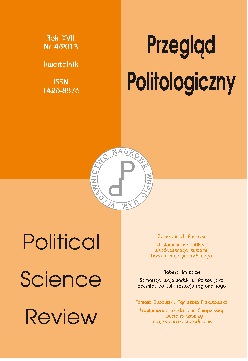Mieszany system wyborczy w wersji „kombinacyjnej”, jako sposób wzmocnienia dużych partii politycznych na przykładzie Litwy
„Combination” – a mixed electoral system as a way to strengthen major political parties on the example of Lithuania
Author(s): Marek JarentowskiSubject(s): Politics / Political Sciences
Published by: Uniwersytet Adama Mickiewicza
Keywords: Litwa; mieszany system wyborczy; wybory; kombinacja; superpozycja; Lithuania; mixed electoral system; election; combination; superposition
Summary/Abstract: With the exception of the first transitional elections, since 1992 a mixed electoral system has been used in Lithuanian elections to parliament, in a variant called the combination or superposition. Half of the seats are filled according to the absolute majority formula, and the other half according to a proportional formula. The voter has two votes. The paper also describes other elements of the electoral system and its evolution. The main question in the survey, however, is whether the results of the elections in the proportional part bring more parties to the parliament than the majority part of the election results. It turns out that more parties and smaller parties get into parliament thanks to the majority formula. This contradicts the widespread thesis that the majoritarian formula helps reduce the fragmentation of parliament and facilitates a majority government. Moreover, the numbers show that the second round, used in the majoritarian part of the election, in 75% of districts confirms the victory of the candidate who came first in the first round.
Journal: Przegląd Politologiczny
- Issue Year: 2013
- Issue No: 4
- Page Range: 237-250
- Page Count: 14
- Language: Polish

